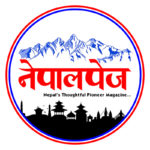Passengers prepare to board a train at Nanjing Railway Station in Nanjing, East China’s Jiangsu Province on January 6, 2023. China’s 40-day Spring Festival travel rush, which officially starts on January 7, is expected to see about 2.09 billion passenger trips made this year. Photo: VCGChina’s 40-day Chunyun or Spring Festival travel rush, the world’s largest human migration, is expected to see about 2.09 billion passenger trips made this year, up 99.5 percent from the 2022 level, as passenger volume is rapidly scaled up following the country’s optimized epidemic response and amid the release of pent-up demand for travel, an official with China’s Ministry of Transport (MOT) said on Friday.
Chunyun in 2023 will last 40 days from January 7 until February 15.
Passenger volume on air, rail and road is set to reach 70.3 percent of the pre-epidemic level in 2019, Xu Chengguang, an official with the MOT responsible for the Chunyun, told a State Council Information Office press conference on Friday.
Safe journey home
Anticipation among migrant workers and office workers of finally being able to return to their hometowns is high and Chinese social media platforms are filled with posts reading “When was the last time you went home?”
For millions of Chinese, returning home for family reunion this year to celebrate the country’s most important traditional holiday after some chose to stay at the place of their working or living to support the COVID-19 control work during the holiday for three years is a relief that comes with the joy of finally overcoming the impacts of COVID on people’s lives.
A Beijing office worker surnamed Zhang said because of the surging demand for train tickets home on January 20, two days before the Chinese Lunar New Year day, she tried to book tickets on 15 occasions, using both her ID card and her parents’. “Whatever the odds are, I am coming home. I haven’t been back for 18 months.”
The 2023 Chunyun officially starts on Saturday. One day later, China will begin implementing its new COVID-19 response measures, which downgrade the infectious disease from Class A to Class B management. This means that travel during the Chunyun period will no longer require nucleic acid tests and health codes, while body temperature monitoring has also been scrapped.
As many college students have already returned home, this year’s passenger flow will mainly be composed of those visiting relatives, which is expected to account for 55 percent of the total, according to MOT. People travelling for work will account for 24 percent while those travelling for leisure and business each account for a further 10 percent.
The MOT said it will employ all necessary measures, including encouraging staggered peak travel, to ensure that billions of Chinese people have safe and smooth journeys to their homes and back to their working cities.
To cope with the challenges, the authority has encouraged staggered peak cross-region travel and called for people to make reasonable travel plans. It also called on senior citizens with illnesses, pregnant women and children to minimize travel. Contingency plans have also been systematically deployed.
Transport equipment will be checked to ensure safe operation, and the ministry said operators should not continue work if they have fever symptoms, while contactless services will be promoted on public transport.
Wan Xiangdong, from the Civil Aviation Administration of China (CAAC), the country’s civil aviation regulator, said at the Friday press conference that the air transportation volume is expected to return to 73 percent of the 2019 level, with the number of daily arranged passenger flights reaching 11,000.
To cope with the surge in travel demand, the CAAC said it has approved 10,313 extra flights, including 3,459 flights serving Beijing, Shanghai and Guangzhou in South China’s Guangdong Province as of Thursday.
Shanghai-based budget carrier Spring Airlines Co told the Global Times on Friday in an email statement that it has resumed six international and regional flight routes since January 1 and is in the process of resuming more air links as market demand and conditions require.
The carrier said air links serving cross border tourism purposes are recovering faster than those for business.
CAAC North China Region Administration said in a statement sent to the Global Times on Friday that it expects air traffic flow to be several times the figures seen in the previous year, and the two airports in Beijing are expected to handle 62,000 flights during the Chunyun period, with an expected increase of 44 percent from 2022.
To ensure safety, the air control regulator has organized more drills to accustom operators with the fluctuating passenger flow and drawn up plans to cope with extreme weather conditions.
Huang Xin, an executive with the China State Railway Group Co, said the company has made arrangements to increase its transport capacity by 11 percent, with more than 9 million seats available daily during the Chunyun period.
In 2019, prior to the COVID-19 outbreak, nearly 3 billion trips were made in the 40-day travel rush period. Since 2020, people have been encouraged to stay put during the festival to avoid infection and transmission amid sporadic outbreaks across the country.
During the last festival, just 1.05 billion trips were made, compared to 870 million in 2021, and around 1.5 billion in 2020.
China prepares for 40-day Spring Festival travel rush Graphic: Xu Zihe/GTEmphasis on rural areas
As the world’s largest human migration is set to get underway, the government has also beefed up support for rural areas, where the medical infrastructure is weaker than in cities.
Zhao Jian, a professor at Beijing Jiaotong University, told the Global Times on Friday that there are risks for rural areas after millions of migrant workers return to their homes, noting this will be the biggest difference to the 2019-20 Chunyun. “And this time, we are facing the more contagious Omicron.”
The State Council inter-agency task force for the COVID-19 response on Thursday proposed a six-point guideline for rural residents to meet the challenges of the potential spread of the epidemic in rural regions during the Spring Festival holidays.
The guideline asks migrant workers to properly protect themselves against possible infection on their way to their homes, take vaccines and offer help to their neighbors when possible.
In some areas, local officials and rural doctors have placed highly vulnerable groups of people, such as the elderly or those with underlying conditions, under grid-based management, monitoring their health every day via WeChat, telephone, and other means, according to Xinhua.
Paving way for economic recovery
For millions of Chinese, returning home for a family reunion is a way of recharging before they return to big cities to chase their dreams.
The free movement of people during the Chunyun will also enhance momentum of China’s business activities.
The British Chamber of Commerce (China) said in a statement sent to the Global Times on Friday that it is expecting more businesses activities and exchanges in 2023.
In addition to passenger flows, the MOT also expects transportation demand for energy, food as well as medical supplies and essential goods to rise “by a significant proportion” during the Chunyun period, a different scenario compared with previous years when cargo demand dropped.
An official with the State Post Bureau also said at the Friday press conference that 94.9 percent of express delivery staff have returned to their posts as of Thursday, and the express delivery business handled 16.7 percent more goods, or 1.89 billion items, for the first five days of the new year, effectively serving economic recovery.
Even during the Spring Festival holidays, some Chinese will still be working hard.
An executive surnamed Xiao from a large company in Northwest China’s Xinjiang region told the Global Times on Friday that her company plans to send teams overseas to grab more orders. “Our clients don’t have holidays during this period; we want to get more orders as early as possible.”





COMMENTS